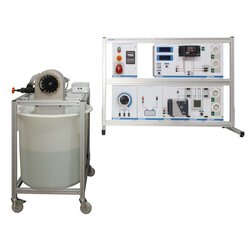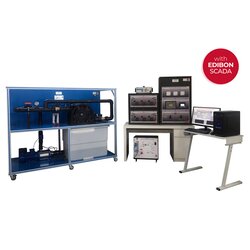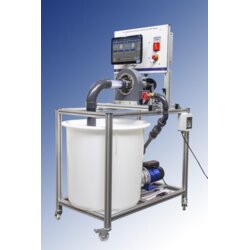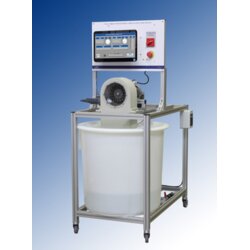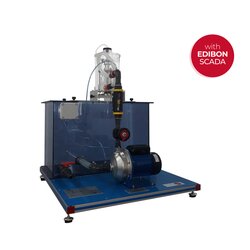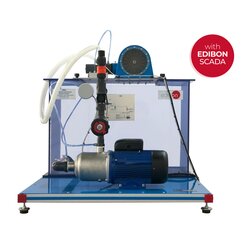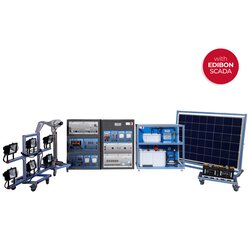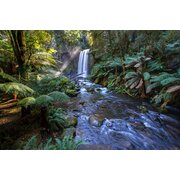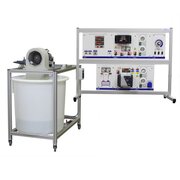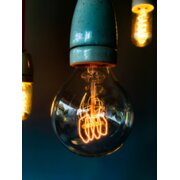Hydropower Training Systems & Lab Equipment
Sort by
Learn more about Hydropower Training Systems
In this section you will learn more about hydropwer training systems. We cover whish types of training systems exists, how they are used in classrooms and training centers, trends, and benefits of using hands-on lab equipment.
What is Hydropower Training Equipment?
Hydropower training equipment consists of educational tools and systems designed to teach the principles and practices of hydropower generation. Hydropower, or hydroelectric power, involves converting the kinetic energy of flowing or falling water into electricity.
Training equipment in this field allows students, engineers, and technicians to gain hands-on experience with various aspects of hydropower systems, including turbine operation, water flow management, and power generation efficiency. These tools are used in academic settings, research institutions, and technical training programs to develop the skills needed to work in the hydropower industry, which is a key component of the global renewable energy portfolio.
What Type of Hydropower Training Equipment Exists?
There are various types of hydropower training equipment, each focusing on different aspects of hydropower generation and technology:
Miniature Hydropower Plant Models:
Pelton Wheel Turbine Models: These training units simulate the operation of Pelton turbines, which are used in high-head, low-flow hydropower applications. They help students understand the mechanics and efficiency of impulse turbines.
Francis Turbine Models: These are models of Francis turbines, which are commonly used in medium-head hydropower plants. They demonstrate the principles of reaction turbines and how water flow is converted into rotational energy.
Kaplan Turbine Models: These simulate Kaplan turbines, which are adjustable blade turbines used in low-head, high-flow scenarios. They are ideal for understanding the adaptability of turbines to different water conditions.
Water Flow and Hydraulic Systems:
Hydraulic Bench Systems: These are versatile systems that provide a platform for experiments related to fluid dynamics, including the study of water flow through turbines, pipes, and channels. They are crucial for understanding the hydraulic principles behind hydropower.
Open Channel Flow Systems: These simulate river or canal conditions and allow for the study of flow dynamics, sediment transport, and the impact of water diversion on hydropower generation.
Power Generation and Control Systems:
Generator Training Modules: These systems demonstrate how mechanical energy from turbines is converted into electrical energy. They often include small-scale generators connected to turbine models, allowing students to explore the relationship between turbine speed, water flow, and power output.
Load Management and Grid Integration Trainers: Equipment that simulates the connection of hydropower systems to the electrical grid, teaching students about load management, synchronization, and the challenges of integrating renewable energy into existing power systems.
Pumped Storage and Energy Storage Systems:
Pumped Storage Simulators: These systems replicate pumped storage hydropower plants, which are used to store energy by moving water between reservoirs at different elevations. They help students understand the role of hydropower in balancing supply and demand in the power grid.
Battery Storage Integration Modules: Training systems that demonstrate how hydropower can be combined with battery storage to enhance grid stability and provide continuous power supply even during low water flow periods.
Environmental Impact and Sustainability Tools:
Fish Passage and Habitat Simulation Models: Equipment designed to study the impact of hydropower installations on aquatic life, particularly the design and effectiveness of fish ladders and bypass systems.
Water Quality Monitoring Systems: Tools for assessing the impact of hydropower projects on water quality, including temperature, oxygen levels, and sedimentation, which are critical for maintaining ecological balance.
Digital and Virtual Simulation Tools:
Hydropower Plant Simulation Software: Virtual platforms that simulate the operation of full-scale hydropower plants, including dam operation, turbine management, and power output control. These tools provide a risk-free environment to explore different scenarios and optimize plant performance.
Augmented Reality (AR) Training Systems: AR tools that overlay digital information onto real-world equipment, allowing for interactive learning experiences where students can explore the inner workings of hydropower systems in detail.
Why Use Hydropower Training Equipment?
Hydropower training equipment is essential for several reasons:
-
Practical Skill Development: These tools provide hands-on experience that is crucial for understanding the operational aspects of hydropower plants, from turbine mechanics to power generation and grid integration.
-
Enhanced Understanding of Fluid Dynamics: Hydropower involves complex fluid dynamics and hydraulic principles. Training equipment helps break down these concepts into manageable experiments, enhancing comprehension and application.
-
Industry Readiness: The hydropower sector requires a workforce skilled in specific technologies and processes. Training equipment prepares students and professionals to meet these demands, improving their employability and effectiveness in the industry.
-
Innovation and Research: These systems offer platforms for testing new hydropower technologies and methods, fostering innovation and contributing to the development of more efficient and sustainable energy solutions.
-
Environmental Awareness: Hydropower projects can have significant environmental impacts. Training equipment helps educate future engineers and technicians about these impacts and the measures needed to mitigate them.
Best Practices for Using Hydropower Training Equipment
To effectively use hydropower training equipment, it's important to follow these best practices:
-
Comprehensive Curriculum Integration: Integrate hydropower training equipment into a structured curriculum that covers both theoretical knowledge and practical skills. This ensures a well-rounded understanding of hydropower systems.
-
Emphasize Safety: Hydropower equipment, even in a training environment, can involve high-speed rotating machinery and water pressure. Implement strict safety protocols and ensure all users are trained in safe operation practices.
-
Encourage Hands-On Learning: Provide ample opportunities for students to interact with the equipment. Hands-on practice is crucial for building confidence and competence in operating and troubleshooting hydropower systems.
-
Regular Maintenance and Calibration: Keep the training equipment in good working order through regular maintenance and calibration. This ensures accurate simulations and reliable operation, which are essential for effective learning.
-
Scenario-Based Training: Use real-world scenarios, such as changes in water flow or grid demand, to challenge students and help them develop problem-solving skills. This prepares them for the dynamic nature of real-world hydropower management.
-
Environmental and Economic Analysis: Encourage students to analyze both the environmental and economic aspects of hydropower projects. This holistic approach helps them understand the broader implications of hydropower development and operation.
-
Collaboration with Industry: Partner with industry stakeholders to ensure the training is aligned with current technologies and market needs. This can also provide opportunities for internships, job placements, and collaborative research.
-
Continuous Learning and Adaptation: Stay updated with the latest advancements in hydropower technology and integrate new developments into the training program. This ensures that learners are prepared for the evolving challenges and opportunities in the hydropower sector.
By adhering to these best practices, institutions and companies can effectively use hydropower training equipment to educate and prepare the next generation of engineers and technicians for careers in the hydropower industry.
